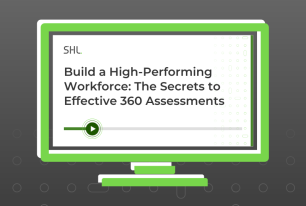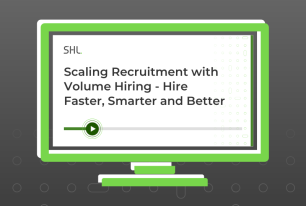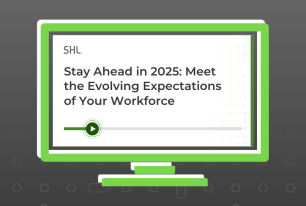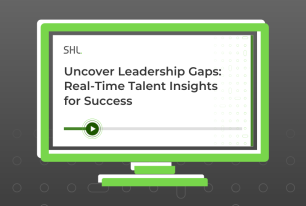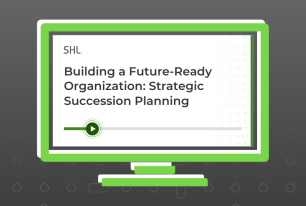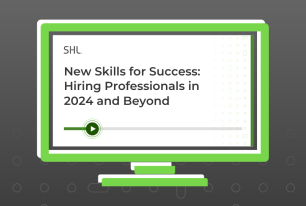Leadership Succession—Time for New Blood?
In the era of constant evolution, is it time for us to approach leadership succession with a new lens?
Share
Leadership succession is vital to an organization’s long-term viability, yet it has proved a constant conundrum in many organizations. The TV series ‘Succession’ tells the story of a family-run global media and entertainment conglomerate and the family head, and CEO, Logan Roy’s quest to find his successor. Logan, plagued by ill-health, wavering shareholder support, and bubbling public claims of a corporate culture of misogyny, is repeatedly forced to re-visit the successor question. In reality, Logan is reluctant to hand over the reigns to anyone—who else is as capable and ready to lead the company as him?
Finding a successor is a necessity for every business and it seems this need could become more urgent in the coming months. In 2021 research from Heidrick & Struggles, found CEO turnover spiked in the first half of 2022—there were 103 CEO appointments among the 1,095 companies it studied across 24 regions. There were just 49 changes at the top in the six months before that. It would appear Executives are not immune from the ‘Great Resignation’ and firms that can plan ahead and be prepared for multiple scenarios will thrive. Succession planning is certainly high stakes—history has shown that—with share prices tumbling overnight and organizations struggling to regain position when a poor fit successor is announced.
What do you need from a successor?
The context for an in-coming leader is critical. The point of transition and future direction will be a key factor in determining the ‘right’ successor. For Logan Roy, his company is in a very turbulent period—pressure within and outside the organization to enact change, and fast. However, Logan, as Chief Executive and seemingly chief decision-maker, appears to be mainly motivated to preserve the legacy. The candidates he considers for the role are, in the main, his own flesh and blood. Perhaps because he feels this will enable consistency and potentially even control, but is this what customers, employers, regulators, and shareholders are asking for?
In 2021, several high-profile successors were announced. Jack Dorsey stepped down as CEO of Twitter, having co-founded the company himself 15 years earlier. He passed the reigns to the relatively unknown Parag Agrawal, although Agrawal has worked at Twitter for 10 years, most recently as Chief Technology Officer. A young successor at 37, but with many years of internal experience and perhaps coaching from Dorsey himself, made Agrawal a ‘safe’ choice in the eyes of shareholders. The new CEO will continue to deliver on Twitter’s previously announced strategy. A low-key, internal successor to continue with an established plan and provide a secure platform for future growth. Agrawal will also need to tackle some tricky political challenges linked to Twitter’s policies on moderating controversial content.
Meanwhile, another tech giant also announced a significant change at the top. Jeff Bezos stepped down as CEO to be replaced by Andy Jassy, again, a relatively unknown successor having spent most of his career within Amazon, most recently leading the AWS business. According to the media, Jassy was not expecting this. Like Agrawal, he is described as a normal and nice guy. Low-profile, not flashy, sports-obsessed, and meticulously detailed. Amazon has grown spectacularly but also has some critical issues to address—cultural challenges within the organization have been voiced, and of course, ongoing US Government antitrust inquiries over the size and control of the company.
Succession planning is certainly high stakes—history has shown that—with share prices tumbling overnight and organizations struggling to regain position when a poor fit successor is announced.
New era, new approach?
Organizations and their leaders worldwide are undoubtedly facing an era of constant evolution. Twitter and Amazon, two of the world’s largest companies, see phenomenal growth potential but also considerable challenge and upheaval, as technology, ways of working, markets, and societal expectations intensify. In the emerging world of work, top executives might feel they have the weight of the world on their shoulders.
Succession planning is often viewed as a dark art. Few will ever know how decisions are made, who was involved when individuals were informed, and why the decision for a new leader was ever made in the first place. As organizations enter a new era where customers, employees, and shareholders demand greater transparency, trust, and fairness from the people that run them, is it time for a new approach, and maybe new blood, when planning the most critical transitions?
Here is some food for thought:
- Scenario plan
Fit to context is key and can be the most predictive component in determining future success. However, context, as the past few years have shown us all, can change quickly. Therefore, considering multiple scenarios and potential successors is fast becoming a necessity. A leader able to transform and drive change may not be the same person as the leader to steady and solidify following rapid growth and expansion. Objectively explore fit to multiple contexts using SHL’s Leader in Context framework and tools. This approach is also proven to increase diversity in the pipeline. -
Seek feedback
Why not ask customers and employees what they like and do not like in a top leader? What have they experienced in the company so far? Or make use of existing 360 feedback to inform your view on what you need and do not need moving forward.
-
Consider transparency
At times, organizations announce that they are seeking a successor whilst a leader is still in place. There are individual and political sensitivities to consider here, but perhaps now is the time to take steps towards a more transparent approach. Everyone knows a succession plan is needed, so why not start to embed this thinking more visibly into people programs and company culture? Knowing a plan is actively worked on can help create confidence and you do not have to name names, e.g. Nationwide recently announced their CEO’s intention to step down as soon as a successor has been identified.
-
Look inside and out
As the concept of talent marketplaces within organizations to connect people, ideas, skills and projects is taking off, how about marketplaces connecting organizations too? Heidrick & Struggles 2021 reported 30% of successors were internal, so a good proportion of successors were coming from the external market. Use objective people insight to help identify if the optimal successor lies within or if an external placement is a wise bet.
-
Job-share
With many leaders feeling a heavy burden as legal, political, societal impact and expectations rise for Executives, perhaps a job share could be the solution? There are many benefits to having two heads and perspectives—balancing workload, greater coverage and reach, pragmatic decision making, and potential benefits for individuals in terms of well-being and sustainability. Oris, the watchmaker, has joint male and female CEOs in place.
-
Ultimate decision-maker
Pay particular attention to who makes the final decision on the plan. Everyone has a vested interest here, perhaps no one more than the outgoing leader. How can you achieve a plan and decision balancing what is required now and in the future?
-
Broader talent program
The final checkmate move in a game of chess is only made possible through the strategy to get there. The same goes for Executive successors. Having a well-oiled talent approach throughout the organization, across levels and functions, harnessing the best of technology, and objective assessment will put you and your company in the optimal position to answer the critical people question—who is ready?
Back to Logan Roy and the future of his fictitious conglomerate. Logan might find the answer becomes more obvious if he objectively evaluates what the company needs from his successor, the context they will be walking into, and leaves this future-defining decision to someone a little less emotionally involved.
It is time for new blood.
With SHL’s Succession Planning, organizations around the world can build a robust succession strategy with diverse talent pools. Find out how we can help you with your leadership succession!



